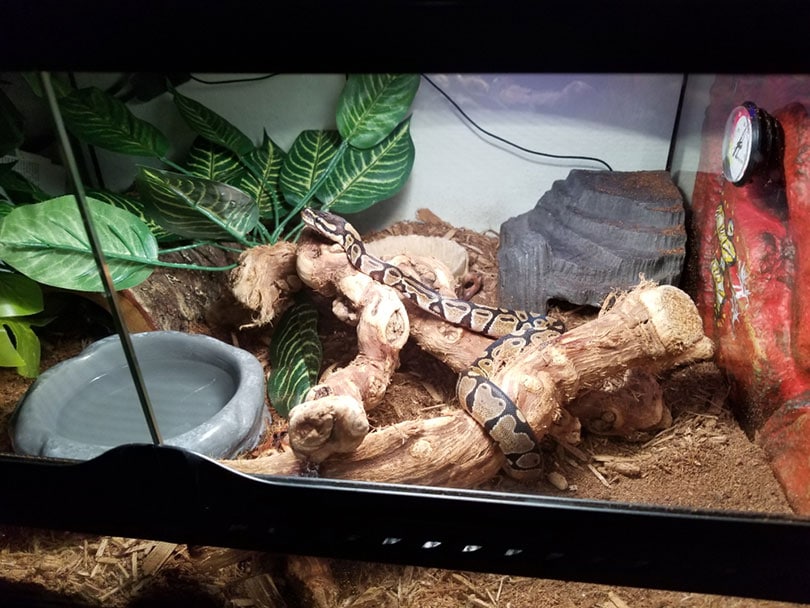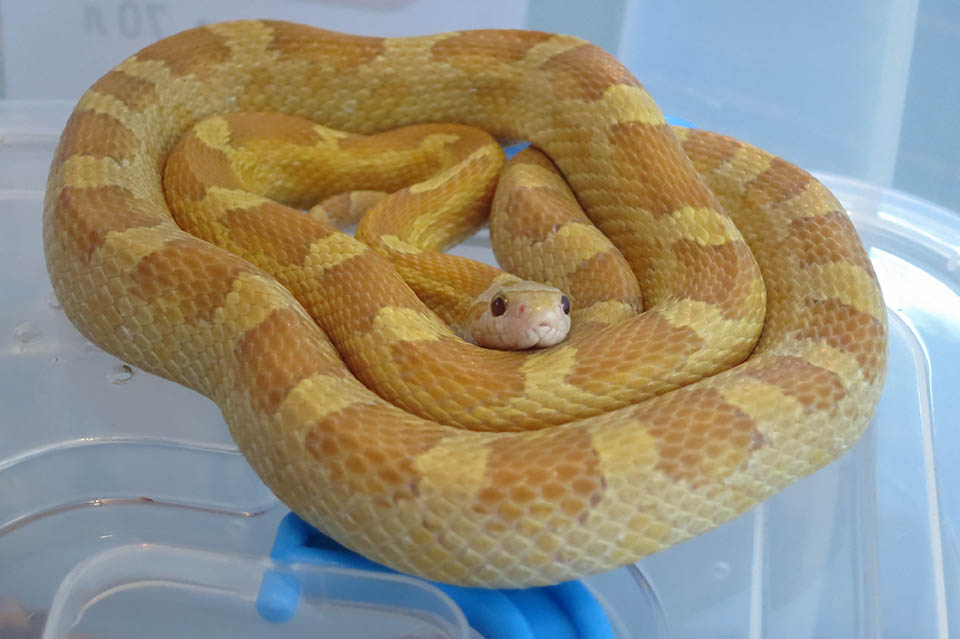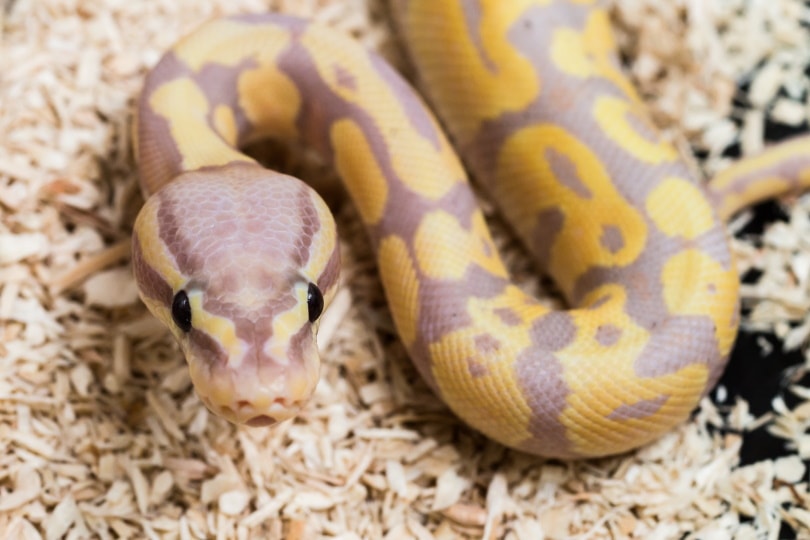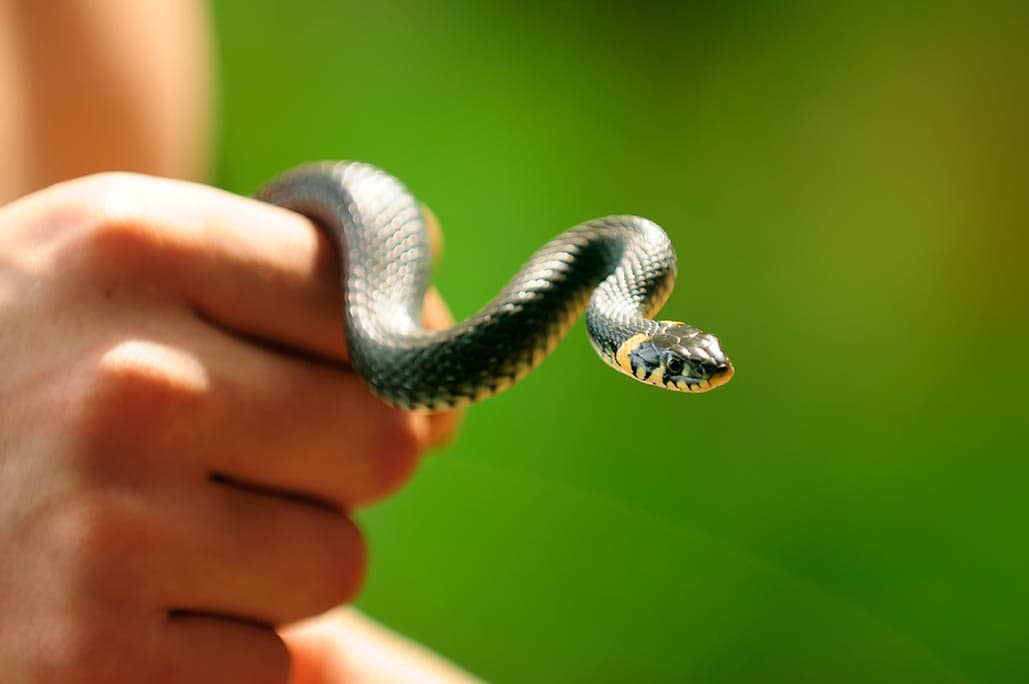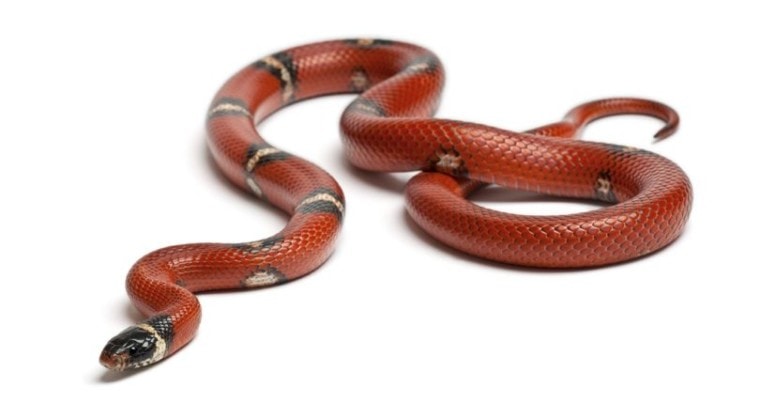
The Sinaloan milk snake is a large milk snake that hails from the coast of Mexico. Its calm demeanor, easy care needs, and small space requirements make it a good beginner snake. One can survive in a 20-gallon tank and the species is nocturnal so does not require UVB lighting or different nighttime and daytime temperatures.
However, they are more skittish than some species, they can give off a bad-smelling musk to deter predators, and they are rarely active during the daytime, so are not ideal for all potential owners.
Read on to see what you need to care for and own a Sinaloan milk snake.
Quick Facts about Sinaloan Milk Snakes
| Species Name: | Lampropeltis Triangulum Sinaloae |
| Common Name: | Sinaloan Milk Snake |
| Care Level: | Low |
| Lifespan: | 12 – 20 years |
| Adult Size: | Mild, easygoing, cuddly, engaging |
| Diet: | Mice and rats |
| Minimum Tank Size: | 20 gallon |
| Temperature & Humidity: | 75° – 80° temperature 30% – 40% humidity |
Do Sinaloan Milk Snakes Make Good Pets?
Sinaloan milk snakes make good pets for beginners and experienced keepers. They have low to moderate care requirements, enjoy being handled, and they do not require too large a tank. They are also non-venomous and rarely bite. However, they do have a defensive, pungent musk, that they emit when scared. And, while some milk snakes do enjoy being handled, they are nocturnal, in the wild, which means that they may not be active during the day.
Appearance
Milk snakes are brightly colored, using this vibrant display as a method of Batesian mimicry, which means copying the appearance of poisonous snakes like the copperhead.
Although markings vary according to the exact species, the Sinaloan milk snake is red and has black and cream bands around the body. Unlike other milk snake species, the Sinaloan has wider and more prominent red bands. They have a black band behind their eyes and a cream belly.
How to Take Care of Sinaloan Milk Snakes
You will need to ensure that your Sinaloan has the following setup and conditions:
Habitat, Tank Conditions & Setup
Tank
The Sinaloan milk snake is one of the larger variants of milk snake, growing to around 48 inches in some cases. However, one can be comfortably housed in a 20-gallon tank. A slightly larger tank can be beneficial but if you provide too large a tank, the snake can become depressed and stressed.
Remember that a dirty tank can cause infections. Poor living conditions are one of the most common causes of illness in snakes. Spot clean daily, removing dirt and any leftover and uneaten bits of food. Every four weeks, remove everything from the tank and disinfect it before replacing it.
Lighting
The milk snake is nocturnal. This means that UVB lighting is not necessary, but you may use a simple lighting setup to replicate a 12-hour day/night cycle. Although the milk snake does not demand it, one can be encouraged to use a weak basking lamp.
Heating (Temperature & Humidity)
This species can survive and thrive in a range of temperatures but tends to do best at a temperature between 75 and 85. You need to ensure that the tank is not allowed to above 90, even in the area surrounding the heat mat or under the basking lamp.
Humidity requirements are lower than with other species of snake but you will need to maintain it at around 30% to 40%.
Substrate
Shredded aspen is considered the best substrate option because it enables you to maintain a proper humidity level. Alternatives include coconut, orchid, pine, and mulch.
Tank Recommendations
| Tank Type: | 20-gallon glass vivarium |
| Lighting: | Optional |
| Heating: | Heating pad in corner |
| Best Substrate: | Aspen bedding preferred |
Feeding Your Sinaloan Milk Snake
Sinaloan milk snakes are opportunistic. In the wild, they would eat anything from small birds to other snakes. In captivity, they tend to do best with a diet of small rodents. Adults will eat mice and large adults may eat small rats. The species is usually quite easy to feed, readily accepting already-dead mice. Ensure that the food is no bigger than the thickest part of the snake’s body and expect to feed weekly. Provide fresh water at all times.
Diet Summary
| Fruits: | 0% of diet |
| Insects: | 0% of diet |
| Meat: | 100% of diet – small/medium sized rodents |
| Supplements Required: | N/A |
Keeping Your Sinaloan Milk Snake Healthy
As mentioned above, the biggest cause of illness in snakes is poor and unsanitary living conditions. Ensure that the tank is kept clean. You should also ensure that you maintain a suitable temperature and humidity level at all times.
Common Health Issues
Lifespan
The Sinaloan milk snake has a moderate to long life, with most examples in captivity living to at least 12 years of age and some living as long as 20 years.
Breeding
Encouraging brumation can help with the breeding process but is not always necessary. Stop feeding for two weeks before reducing the temperature to approximately 60° and brumate between 6 weeks and 3 months. When the female awakens, she will think it is spring and time to breed.
Move the male snake into the female’s enclosure and ensure that you supervise the breeding. The female is cannibalistic so will attempt to eat the male after breeding. If the breeding successful, the female will shed four weeks later, and two weeks after this she will lay her eggs in a suitable spot.
once hatched, babies will go through their first shed after a week and can then be fed pinkies from this time.
Are Sinaloan Milk Snakes Friendly? Our Handling Advice
This species can be quite skittish and active. However, they tend to be docile and will accept handling, once they get used to you and the process. Younger snakes tend to be more nervous about being held.
When you get a new snake, give it approximately ten days to get used to its habitat before you try picking it up and handling it. Ensure that you hold it above something that offers a safe landing, just in case. Start by handling it for approximately five minutes a day. When it is happy with this amount of handling, you can increase this to 15 minutes a day.
The species rarely bites and is not venomous. However, when threatened, they can give off a pungent-smelling musk.
Shedding & Brumation: What to Expect
A healthy milk snake should shed all of its skin at once. If yours is shedding in patches, check the humidity level of the cage is appropriate, and if they continue to endure patchy sheds, consult a vet. An adult may only shed every two months or so, while a juvenile will shed every few weeks to every month.
Brumation occurs every year in the wild, usually starting in October, but is not necessary in captivity. Some breeders encourage brumation, therefore mimicking appropriate conditions, to encourage breeding.
How Much Do Sinaloan Milk Snakes Cost?
Sinaloan milk snakes are popular and quite common. As such, they are among the more affordable breeds. Expect to pay around $50 and upwards for one of this species. The setup, including tank and food for the first few weeks, will cost considerably more and you can expect to pay several hundred dollars before getting your milk snake home.
Care Guide Summary
Final Thoughts
The Sinaloan milk snake is one of the more common and popular milk snake breeds. It has wider red bands than other milk snakes and the species is not prone to biting but usually tolerates being handled. Its care requirements are simple and it does not require a massive tank, which makes it a popular species as a pet, whether for beginner or experienced handlers.
Related Reads:
- What Do Milk Snakes Eat in the Wild & as Pets?
- Pueblan Milk Snake: Facts, Info, Pictures & Care Guide
Featured Image Credit: Eric Isselee, Shutterstock




